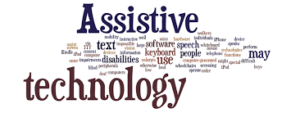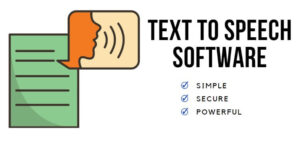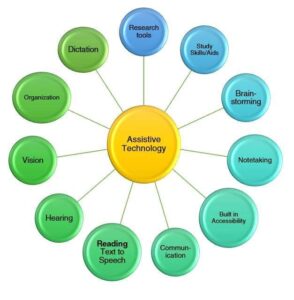Exploring Assistive Technologies in Education: Challenges, Opportunities, and Reflections
The term “assistive technology” refers to tools, machinery, software, and systems designed to help people with disabilities complete tasks that would otherwise be difficult or impossible. These developments aim to enhance autonomy, efficiency, and general well-being in a number of areas, such as everyday living, education, mobility, and communication. Examples of assistive technology include screen readers, which help the blind and visually handicapped access information, hearing aids, which help people with hearing loss, and communication devices, which help people with speech difficulties communicate.

An essential reading, “Assistive Technology for Students with Learning Disabilities,” showcases the diverse array of assistive technologies available, ranging from simple solutions like pencil grips to advanced options such as computer programs and tablets. This literature emphasizes the significance of staff training and the seamless integration of assistive technology to bolster student learning.It challenges readers to contemplate how these technologies can effectively address learning obstacles while acknowledging limitations such as insufficient research and the rapid pace of technological advancements.
My experience using assistive technologies
During my tenure as an Indian geography teacher, I made a concerted effort to include assistive technology into my instructional strategies. One noteworthy example comes to mind: I used text-to-speech software to make course materials more accessible to students who are visually impaired. With the use of this creative gadget, printed text might be said aloud, enabling visually challenged pupils to interact with the material in an efficient manner. In addition, I made use of educational applications and interactive whiteboards to enhance student comprehension and suit a variety of learning styles. Assistive technology integration proved invaluable in building inclusive learning environments and boosting student accomplishment, even in the face of obstacles including restricted access to technology and training resources.

Challenges and Limitations of assistive technologies
Technology plays a significant role in AT, and teachers need to be proficient in using it. Regretfully, most people lack the necessary skills to make use of these helpful tools. The lack of trainers or teachers who are familiar with the tools is one of the main obstacles to the adoption and use of AT in classrooms. Even if the necessary people provide these tools, they run the risk of being wasted in the absence of a trainer. These tools may sit idle because those tasked with utilizing them don’t know where to begin in building independent lives.The difficulties in utilizing and integrating assistive technology are caused by a number of different issues. Accessibility is a major challenge because these vital instruments are sometimes out of reach for certain communities or regions due to their high pricing and restricted availability. Furthermore, educators, caregivers, and people with disabilities often lack awareness and comprehension of assistive technology, which leads to under utilization. This problem is made worse by inadequate training and assistance, which keeps users from taking full benefit of modern technologies.Compatibility and customization are additional challenges because assistive devices need to meet specific demands while integrating seamlessly with current systems. Adoption of assistive technology can be impeded by stigma and unfavorable attitudes about impairments, but securing funds and guaranteeing its long-term sustainability provide additional problems. To overcome these challenges, many stakeholders must work together to improve funding, attitudes, compatibility, awareness, training, and access. In the end, overcoming these obstacles will enable people with disabilities to live more independent lives and take full advantage of assistive technology.

It was an interesting read Suruchi. You have very well mentioned the essence of how assistive technology can make a difference for children with special needs. I like how you have highlighted the positive impact that these tools can have on communication, learning, and cognitive development.
This blog post is well-written and encourages to consider how we can support exceptional pupils and create inclusive learning environments for all students. Great job!
Your exploration of assistive technologies in education is enlightening. It’s great to hear about your use of text-to-speech software to aid visually impaired students, showing how these tools can make learning more accessible. You’ve highlighted important challenges like lack of training and high costs, which hinder wider use of assistive tech. Your insights stress the potential of these tools to empower students with diverse needs, emphasizing the need for collaboration and thoughtful implementation. Well done!ment